Tick off these December gardening jobs for a picture perfect plot this winter
Our list of important December gardening jobs will keep your garden looking its best through winter
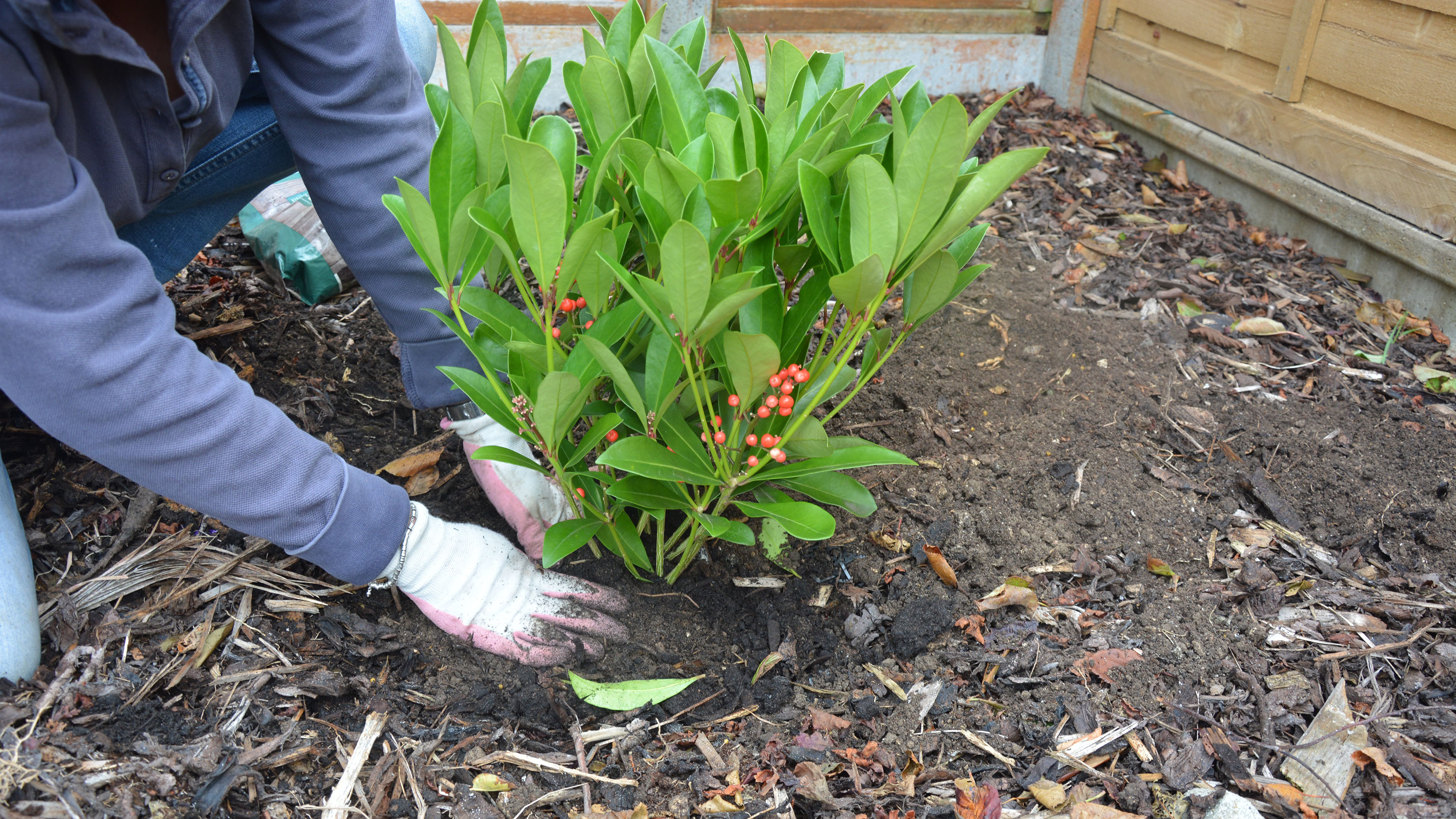
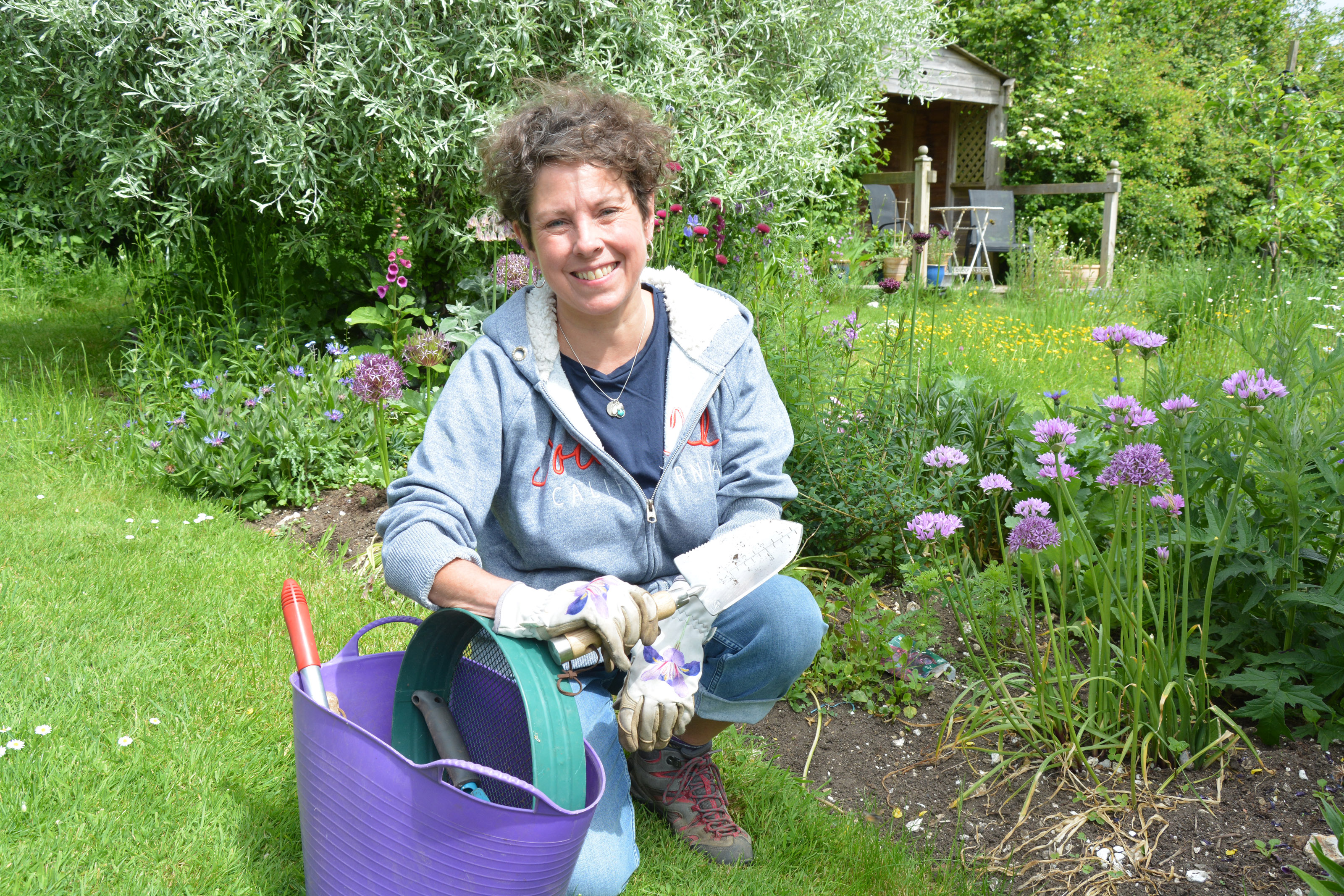
December gardening jobs can more or less be divided into pre December 25 and post December 25. The run up to Christmas Day is all about tidying and sorting the garden ready for the Christmas holiday to make sure it looks tidy and colorful for festive visitors.
I tend to use the days between Christmas and New Year as a good time to get some fresh air and work off some of the excess calories. It is lovely to get out into the winter garden and see what’s going on – if you’re lucky you may even see the first hellebore buds pushing up through the soil, or the first catkins hanging fatally from the hazel trees, the first early signs of spring.
As long as the weather isn’t torrentially wet or frozen solid there are still a lot of things you can do in the monthly gardening calendar, from mulching soil to enrich it for next year, to pruning trees, creating colourful winter planters and even taking cuttings of your favourite perennials.
Don’t forget houseplants either. They are often given as gifts at this time of year and those you’ve had for ages will also need nurturing through the shortest winter days.
And as the days are shortening and the weather is getting colder and damper, this is the perfect opportunity to go undercover and make sure your greenhouse and sheds are clean and tidy, too.
Keep your plot in shape with our top December gardening jobs
Our pick of December gardening jobs will help you create the garden you want and also keep plants healthy and flourishing.
1. Look after houseplants
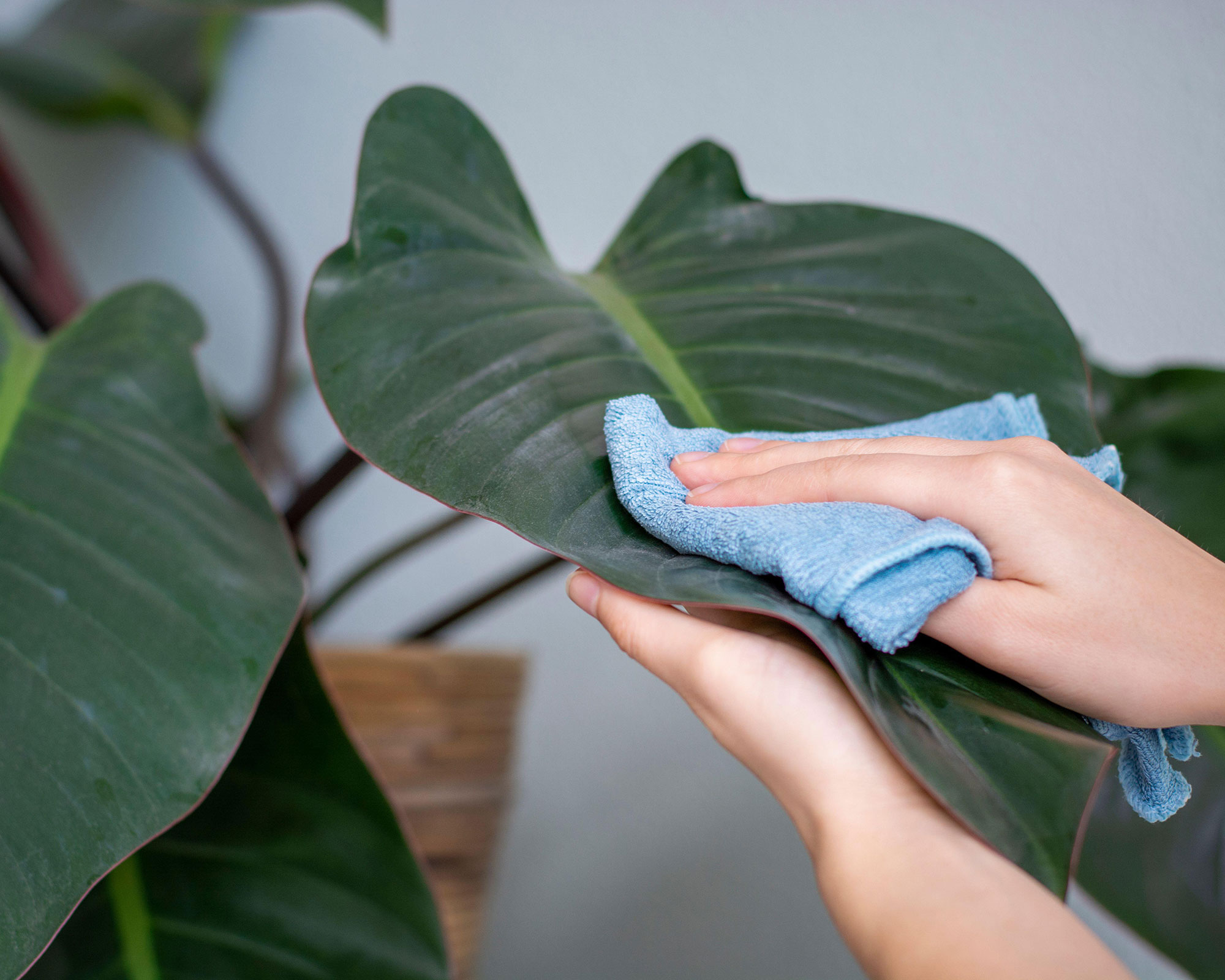
This season is a tough time for your indoor plants because many of them hail from temperate, humid climates and are not well suited to our dark, dry, heated homes.
You can improve conditions by creating a humid atmosphere around their leaves using a layer of damp pebbles and misted water, and by moving them to the lightest part of the room.
Unless they are flowering, there is no need to feed houseplants in winter and they only require watering when their compost is dry to the touch.
If you are given a Christmas plant as a festive gift, read the label and follow its feeding and watering requirements carefully. Orchids will thank you for a mist with orchid spray and you should dunk their roots in a bowl of water every fortnight, letting them drain well afterwards.
Houseplants can also harbour pests that seek refuge inside our nice warm homes, or that travelled back inside after plants spent their summer in the garden. Keep them healthy by wiping their leaves with a soft, damp cloth to remove dust and the first signs of pest presence, and if you find large infestations use an indoor insecticide, making sure there are no pets or children in the vicinity.
Top tip: If you are buying plants as a gift, remember they have been in a warm garden center and the shock of the cold outside won’t do them any good. Ask staff to wrap them well before leaving the shop and get them back indoors as soon as possible.
2. Take root cuttings
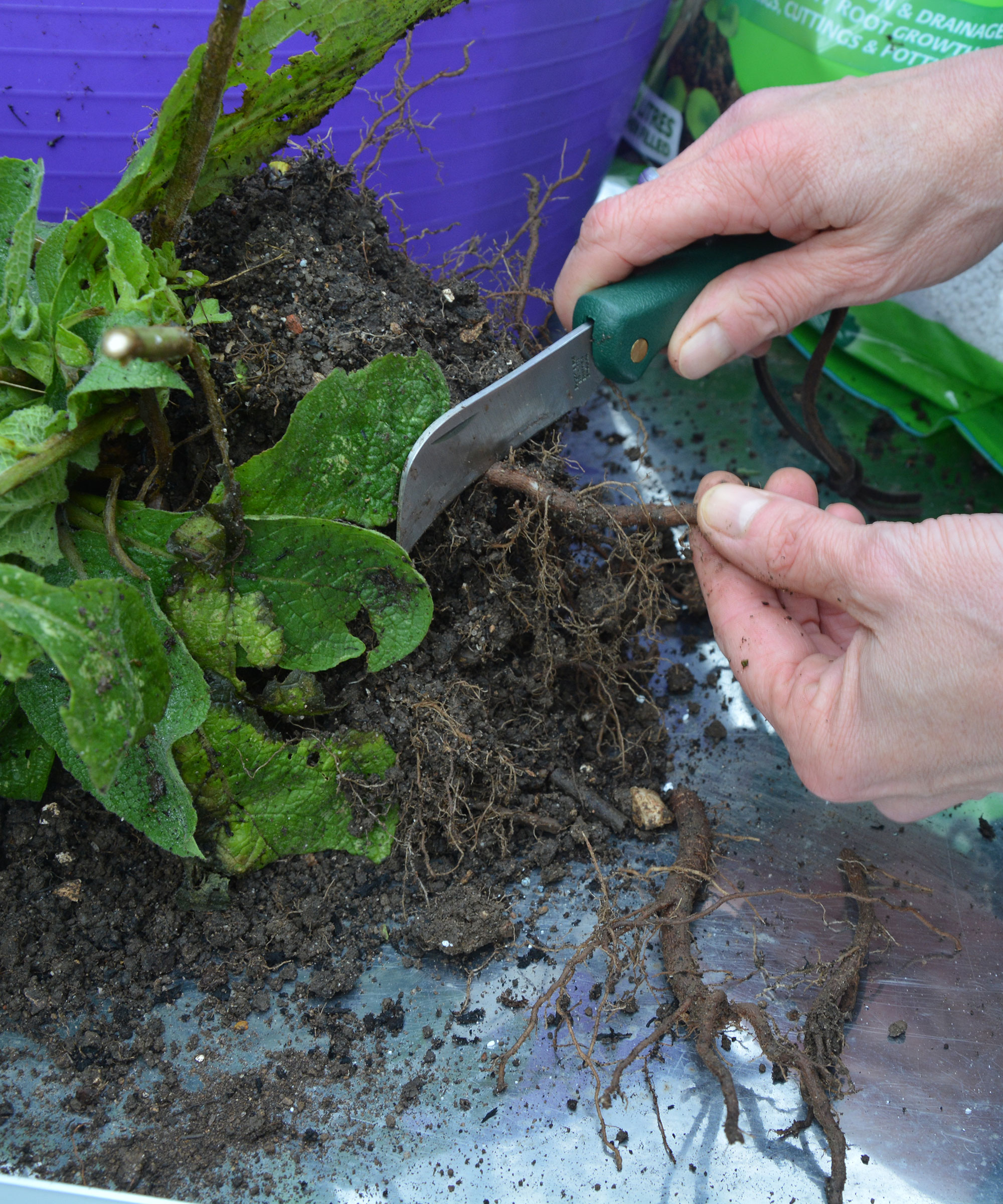
Taking root cuttings from a healthy mature verbascum
Taking root cuttings is an easy technique used between November and early March when perennials are enjoying their winter slumber. It can be carried out on several varieties including Oriental poppies, Japanese anemones, phlox, hardy geraniums and verbascum.
As well as being easy, plants grown from root cuttings develop under the soil, so are less prone to pests and diseases. If the plant is mature and has a substantial root ball, you can also create several new plants from one parent.
When taking cuttings from plants, choose healthy pencil-thick roots and remove no more than a third of the entire system as you will only weaken the parent plant, which should be returned to the soil immediately after the cuttings are taken, and watered well.
Top tip: Some plants such as Japanese anemones, phlox and hardy geraniums produce thin roots that are too slender to insert vertically into a pot. Their root sections around 2-3in (5-10cm) should be laid on the top of pots of dampened seed compost and covered with vermiculite or perlite. They can then go into a cold frame or mini greenhouse. Keep the compost damp.
3. Plant a bright container
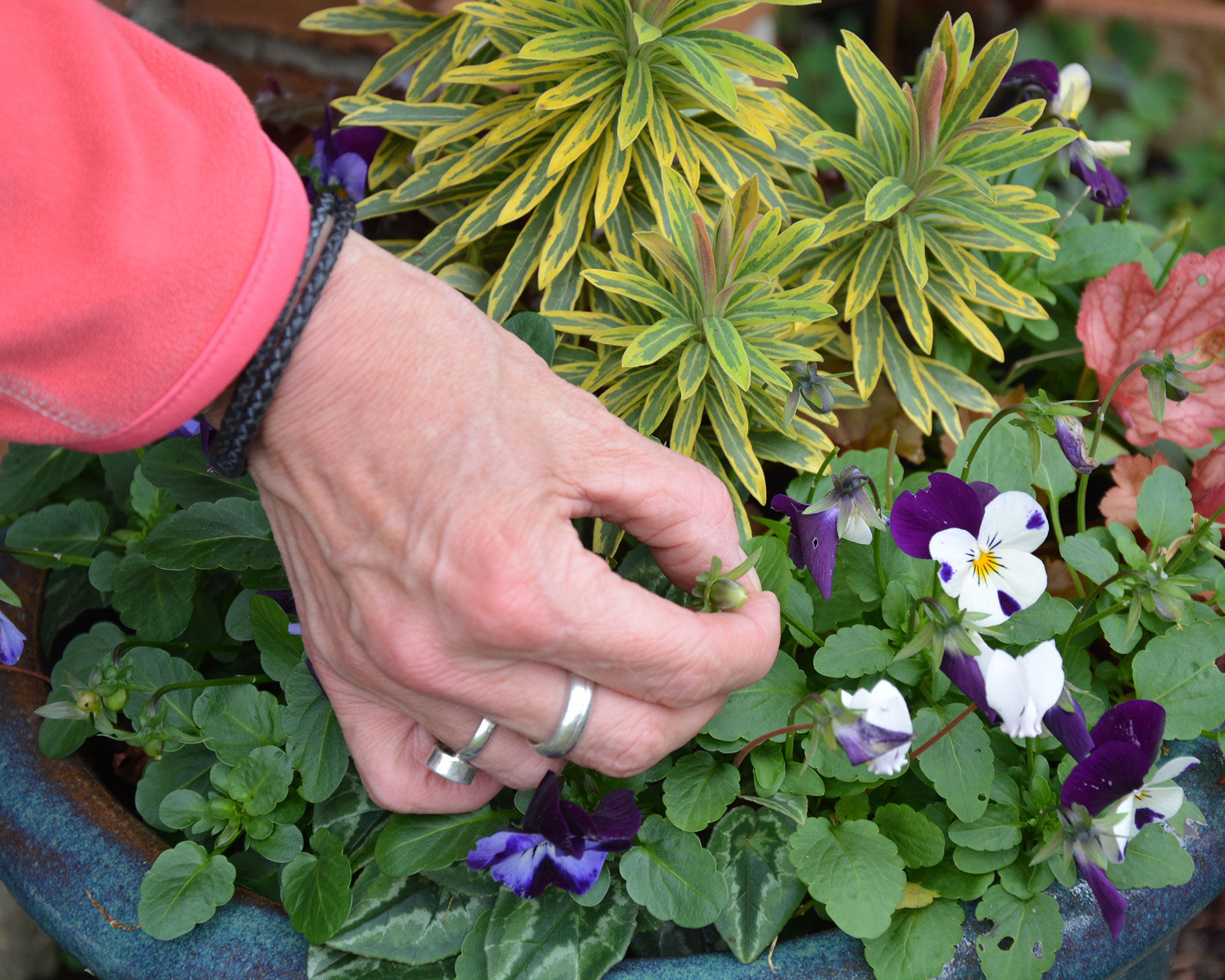
Deadhead container plants regularly for prolonged flowering
Give festive visitors a colorful welcome this Christmas with a bright winter planter by your front door. Never think that summer has all the best container plants, for winter is just as richly blessed if only a little differently.
Some of the best winter plants for pots that I like to use are hardy herbs such as thyme and sage to offset gem-bright winter cyclamen and violas, while gaultheria is a compact shrub that has glossy red berries in winter. Grasses also add height and structure to containers, and like all hardy plants can be added to the garden when you want to change your planter’s planting scheme.
Use multipurpose compost and feed your plants while they are growing. There is no need when they stop flowering in the depths of winter, but you will still need to water them during dry spells.
Don’t forget to raise your garden planters on feet so that excess water can escape, and wrap them in fleece, newspaper or bubble wrap during freezing spells.
Top tip: If you have any spring bulbs left over from fall planting, add them to planters as they will help prolong their flowering life.
4. Give your soil a boost for next year
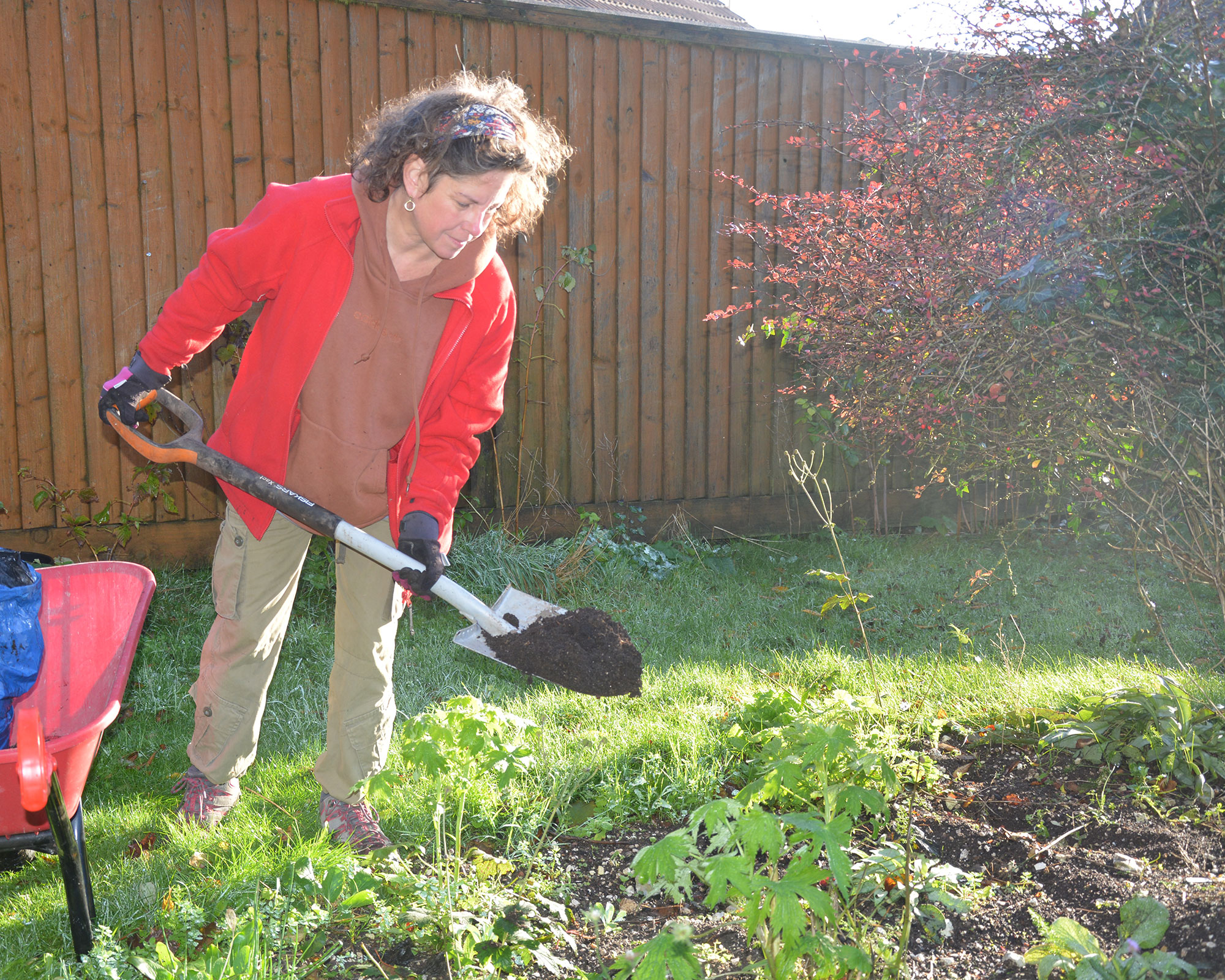
Pile a generous layer of well-rotted compost on borders to feed the soil
There are gaps in the garden border and the weather is closing in, so it’s time to give the soil some love before everything becomes too cold and wet to work on.
Fork over the soil before mulching, remove perennial weeds (dandelions, chickweed etc) and turn small weeds into the soil as a homemade green manure.
After weeding, add a generous layer of well-rotted farmyard manure or homemade compost. It will be broken down by the elements (our weather is often at its fiercest in the early months of the year) to feed the soil.
If the ground is waterlogged or frozen stay off it and leave it until it dries out or the weather warms. If it is workable though it is wet, lay a plank or a board over the soil and stand on it so your weight is evenly distributed and you avoid compacting the soil.
We use homemade compost on the borders which is cheap but does often contain weed seeds that need hoeing out as the season progresses.
Top tip: If you have a farm or stables nearby, pop in and ask if you can buy some horse manure. It will be a lot cheaper than commercial manure, but make sure you leave it to rot down for a few months before use as its nitrogen levels can scorch young plants.
5. Move perennials

When you life a plant to relocate it make sure you keep plenty of soil around its roots
Sometimes we make mistakes and plant things in the wrong place in our borders. If you have a perennial or two that aren’t thriving or look wrong and you have found perfect spots for them elsewhere, you still have time to get relocating.
Having said that, if the soil is frozen or waterlogged, leave them where they are and make the move next spring, just as they are coming back into growth.
Follow this method for moving perennials:
- Start by digging a new planting hole large enough to accommodate all the rootball, then add some bone meal to the base. This will degrade through winter and help feed the roots when the plant comes back into growth next spring.
- Carefully dig around the plant you want to move and lift it from the ground, keeping as much soil around the roots as possible.
- Move it straight to its new home and once it is in the hole, infill around the roots with soil and compost.
- Firm this soil down as you go so it falls around the roots, supports the plant and gets rid of air pockets, then water around the roots generously. Remove any weeds that grow around the plant and make sure the roots don’t dry out while it settles in.
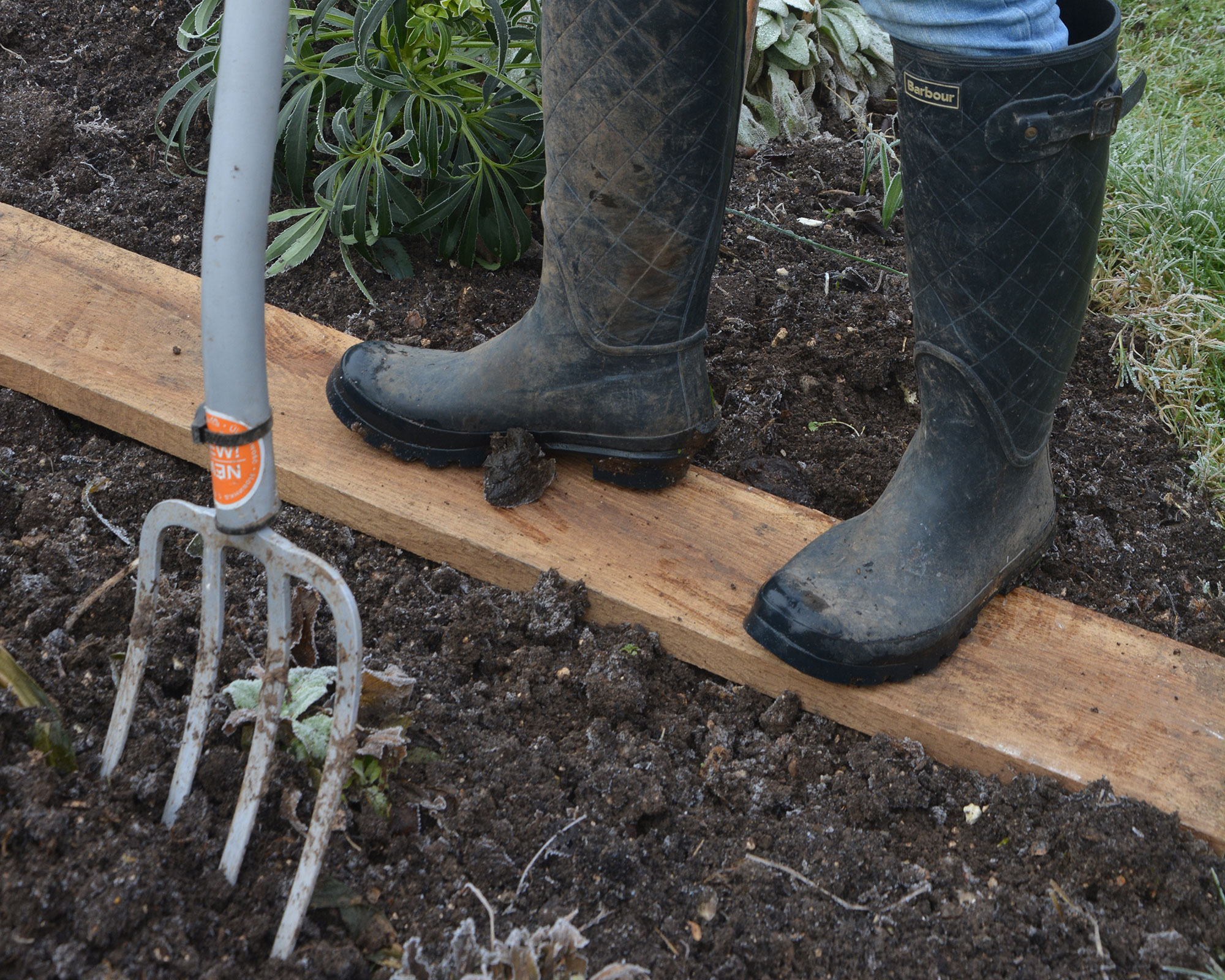
Standing on a plank or board while you are working helps protect the structure of the soil
If you feel you are in need of some new digging equipment and have an eye on potential Christmas gifts, our guide to the best garden spades is the best place to start your search.
Top tip: You can help prevent soil compaction by working off a plank or wooden board when planting and dividing.
6. Prepare hellebores for flowering
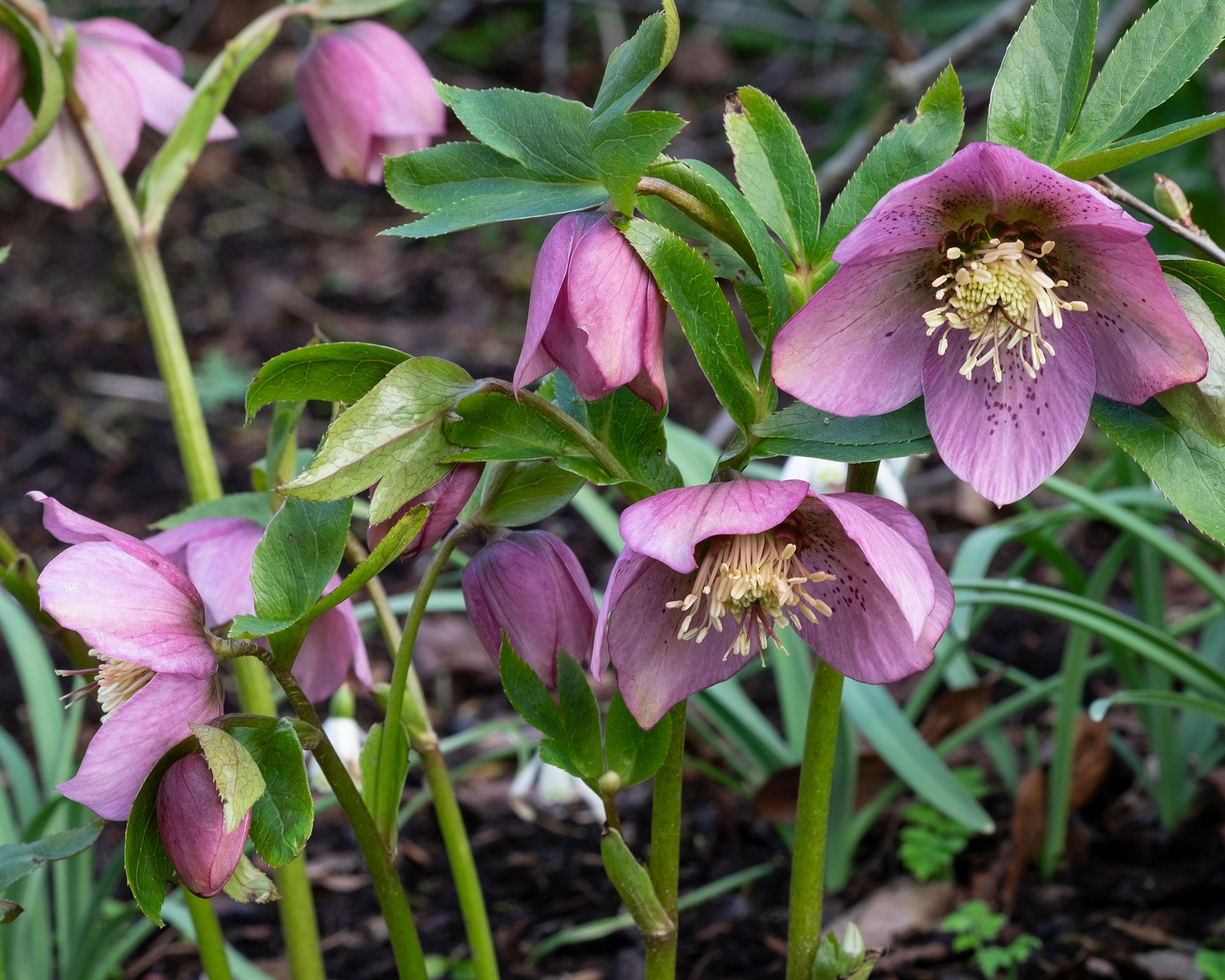
Hellebores are one of the earliest plants to flower and also one of the easiest to grow
Hellebores, or Christmas/lenten roses, are one of the first perennials to come into flower in early spring. They are a beautiful and varied plant, happy in most soils and situations, though dappled shade is their favourite.
Their flowers, usually in shades of red, purple, cream and white, will start emerging through the soil in the New Year, so it's important to create ideal growing conditions for them to look their best.
For one of your December gardening jobs, start cutting away this year’s old and tattered foliage. This improves the plants’ appearance and also reduces the risk of diseases entering through damaged leaves.
Once the old leaves have gone this next generation has room to grow and you can further help the hellebores by mulching them with a thick layer of compost or well-rotted manure to feed the soil and insulate the roots through the worst of the winter weather.
7. Tidy up tender perennials
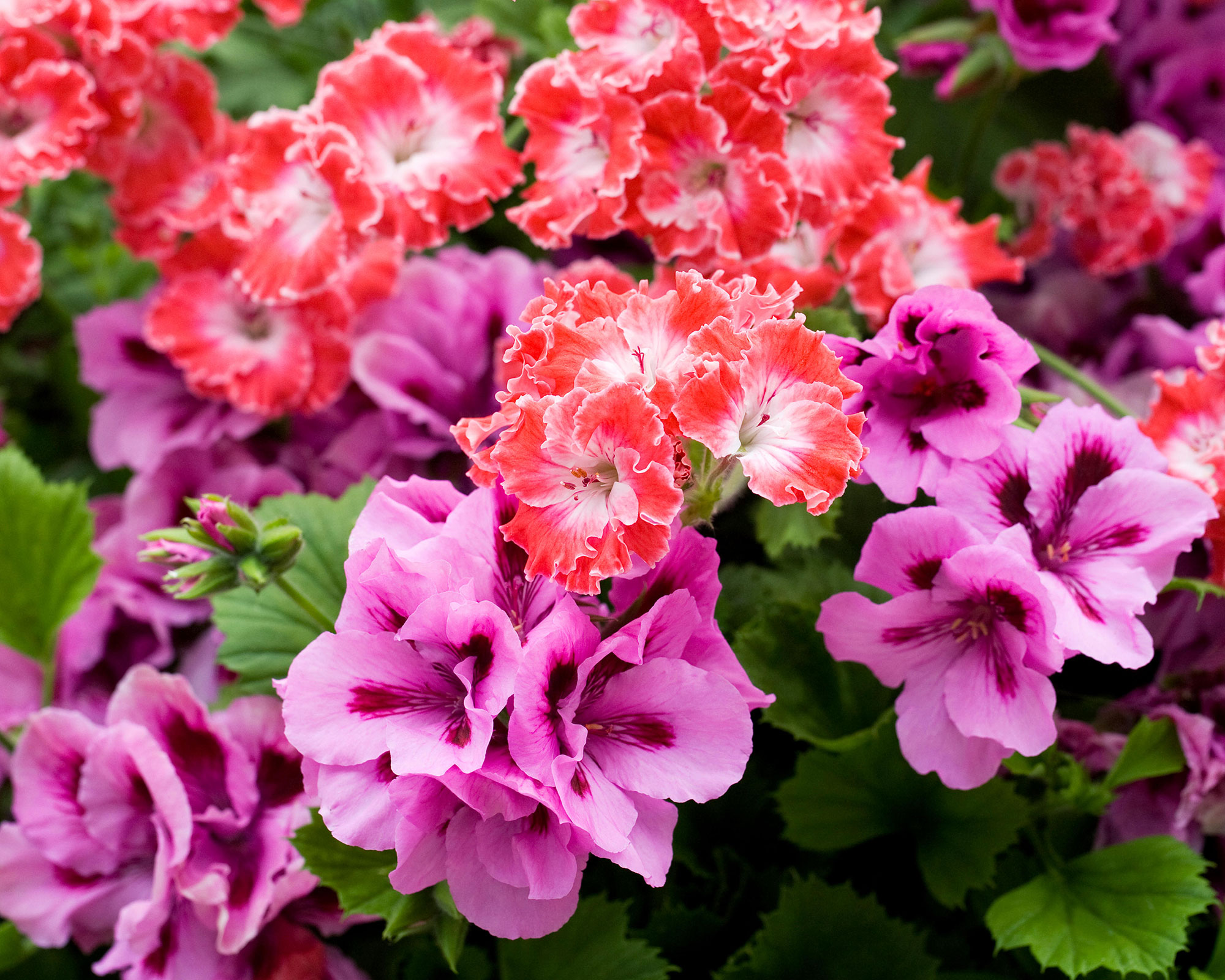
Pelargoniums undercover should be cut back now and you can use their offcuts to make more plants
Unless you are lucky enough to live somewhere warm, or your garden is sheltered, your tender perennials such as pelargoniums, fuchsias and dahlias should either be undercover or fleeced and mulched to help protect plants from winter.
Large pelargoniums should be cut back to between 4-6in (10-15cm). This helps keep them healthy through a winter undercover, when subdued lighting and reduced ventilation could potentially make their dense and fleshy foliage more vulnerable to diseases such as botrytis, a common grey mould.
It also helps prevent them from forming flower buds during mild spells of weather, because this will divert their energy away from root and stem development when they come back into growth, weakening the plant.
Don’t feed them through winter and only water occasionally when the compost has dried out.
8. Make your fig tree more productive
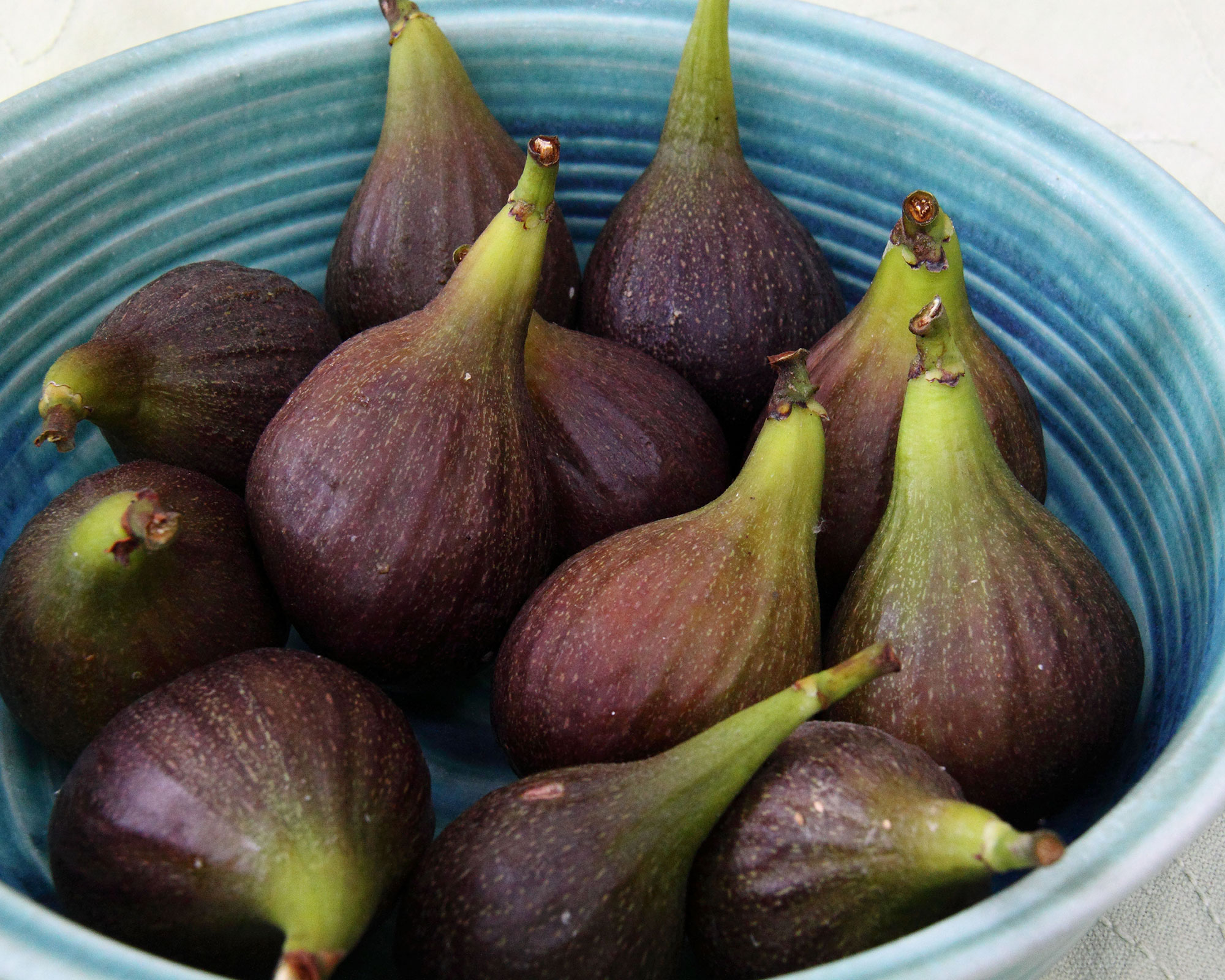
Figs are a delicious summer treat and incredibly easy to grow
Although far more common in warmer climates, fig trees are now widely grown in the UK. If you're keen to learn how to grow figs, ‘Brown Turkey’ is generally seen as the easiest, and most popular, variety to cultivate.
I have a fig tree growing on a warm, south-facing wall and although it is only seven years old, this year it gave me a glut of delicious, succulent fruit. However, because of the brevity of the British summer not all the figs ripened and these half-ready ones need to be removed now.
If you leave them they may start to rot, endangering the health of the tree and even if they stay healthy, they still won't ripen next year.
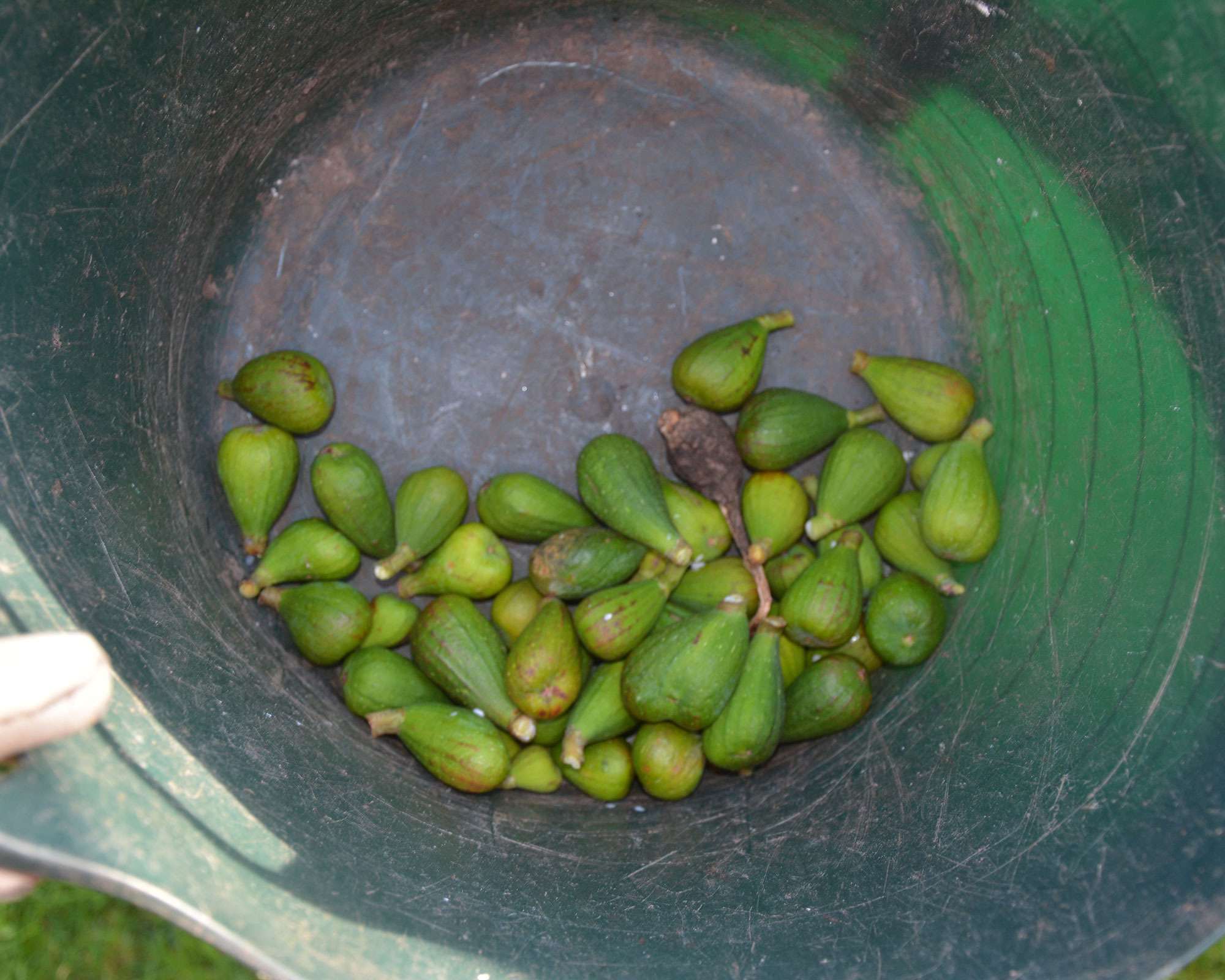
Unripe figs removed in autumn before they rot on the tree
They are easy to take off, just give a gentle tug and then add them to the compost heap. Take them all off, leaving the minuscule fruit buds, barely larger than a small fingernail, in place.
These can be found in the joints where the leaves meet the branches, and they will sit out winter and swell and grow next summer.
Top tip: Fig trees are vigorous growers and need pruning – but not yet! Leave this job until the end of winter (around February), otherwise they will bleed profusely and lose too much sap.
9. Plant a shrub for winter scent and color
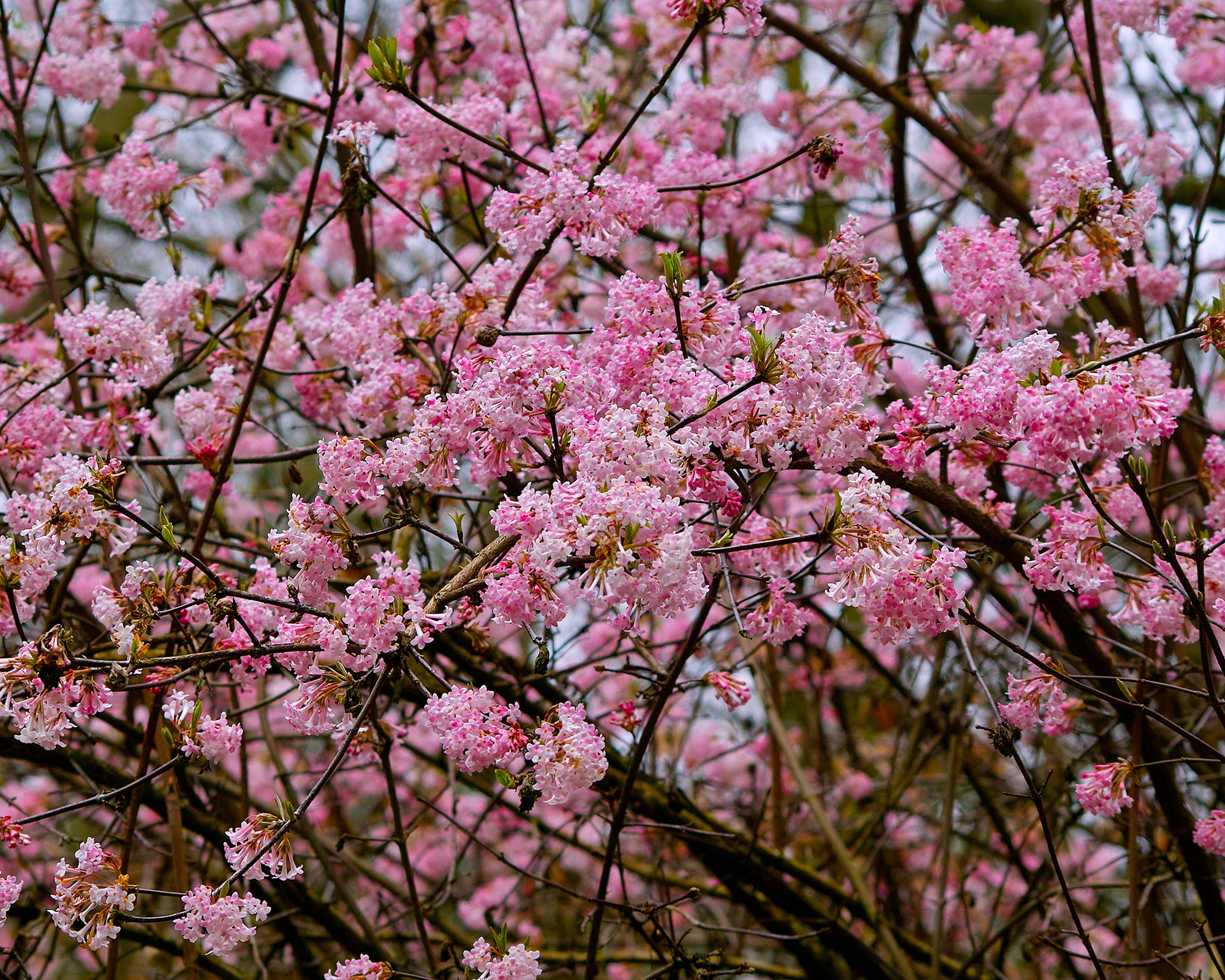
Viburnum x bodnantense 'Dawn' is just one of several shrubs that can be planted in December for winter scent and colour
As long as the ground isn’t frozen or saturated, you can plant trees and shrubs as one of your December gardening jobs. In fact, you will be spoilt for choice as most varieties will be available to buy bare root, so they are smaller and considerably cheaper than those sold in containers.
Best of all, there is no need to wait until spring to see the results of your planting. If you choose a container-grown variety with evergreen leaves, scarlet berries, or one one of the best winter flowering shrubs, such as a Daphne odora, sweet box (Sarcococca confusa) or Viburnum x bodnantense 'Dawn', then you will have a pretty spectacle to greet visitors this festive season.
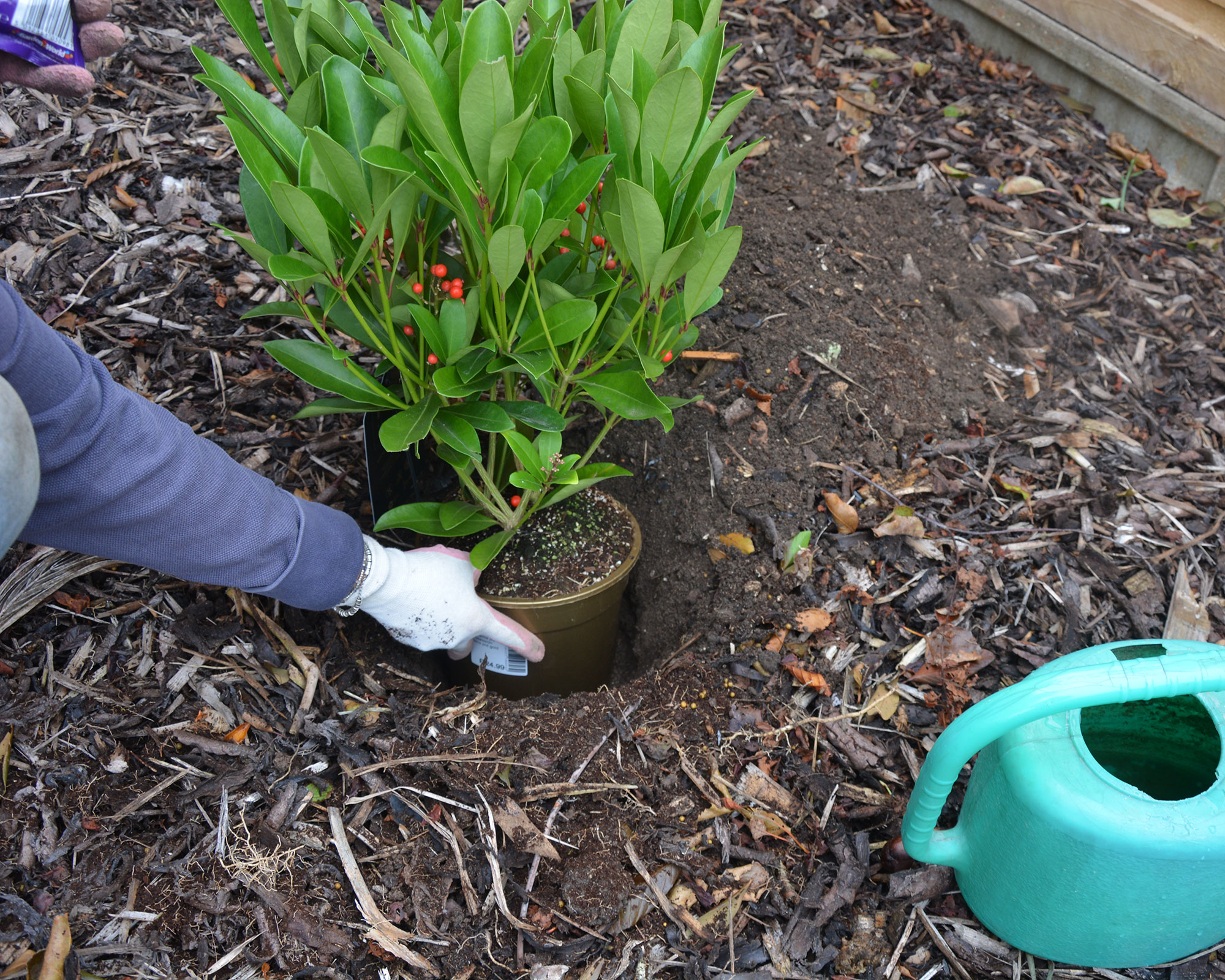
Checking the planting hole is large enough for a container-grown Skimmia japonica
From a gardener’s point of view, early December planting requires less work because the ground is damp and easier to dig and the season means you shouldn’t need to water as often as in spring and summer.
Just make sure the tree or shrub you buy suits your soil, or a container if that’s what you are planning, and has enough room in the spot you wish to plant it.
Before planting, soak the pot in water (or soak the roots if it is bare root) and make sure the hole you have dug is large enough to accommodate the rootball comfortably. Add some bone meal to the planting hole, as this will break down through winter and feed the roots next spring,
Firm the soil down around the tree or shrub (or compost if it is in a pot) and water generously, even if rain is forecast.
Top tip: If you have heavy soil prone to waterlogging, create a shallow mound of soil and grit and plant your tree on that, adding lots of well-rotted compost or manure matter to improve fertility and boost drainage.
10. Keep your greenhouse clean
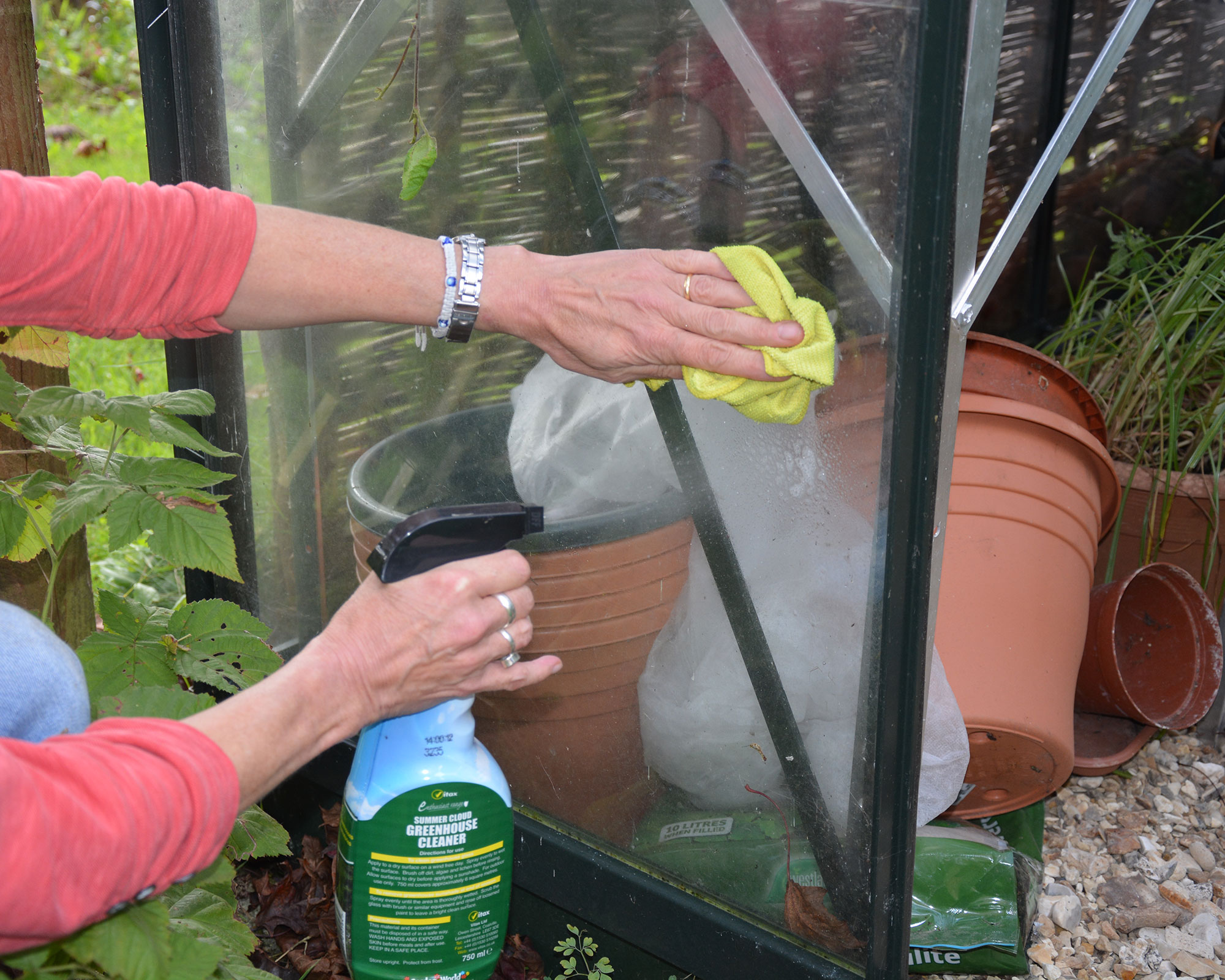
Cleaning greenhouse glass in winter to let in maximum light for overwintering plants
Greenhouses are busy places in winter, often packed with tender plants, cuttings and seedlings. They need to be kept well ventilated and pest-free and the glass should be clean to allow maximum light levels through to the plants within.
Disinfect surfaces too to avoid contaminating young plants or seedlings you grow and sow during winter.
On warmer days, open doors, windows and vents to let air pass through your greenhouse and help prevent fungal problems, moulds and rots attacking plants. Remember to close them in the afternoon when temperatures fall.
Another task to add to your December gardening jobs is to check for pests, especially snails and aphids that will happily seek shelter in a warm greenhouse.
Top tip: There are plenty of options for the best winter vegetables to grow in a greenhouse during the colder months. One of the easiest to try is cut-and-come-again salads in old growbags and containers to give you lots of fresh and vitamin-packed greens through winter.
11. Keep your compost ticking over
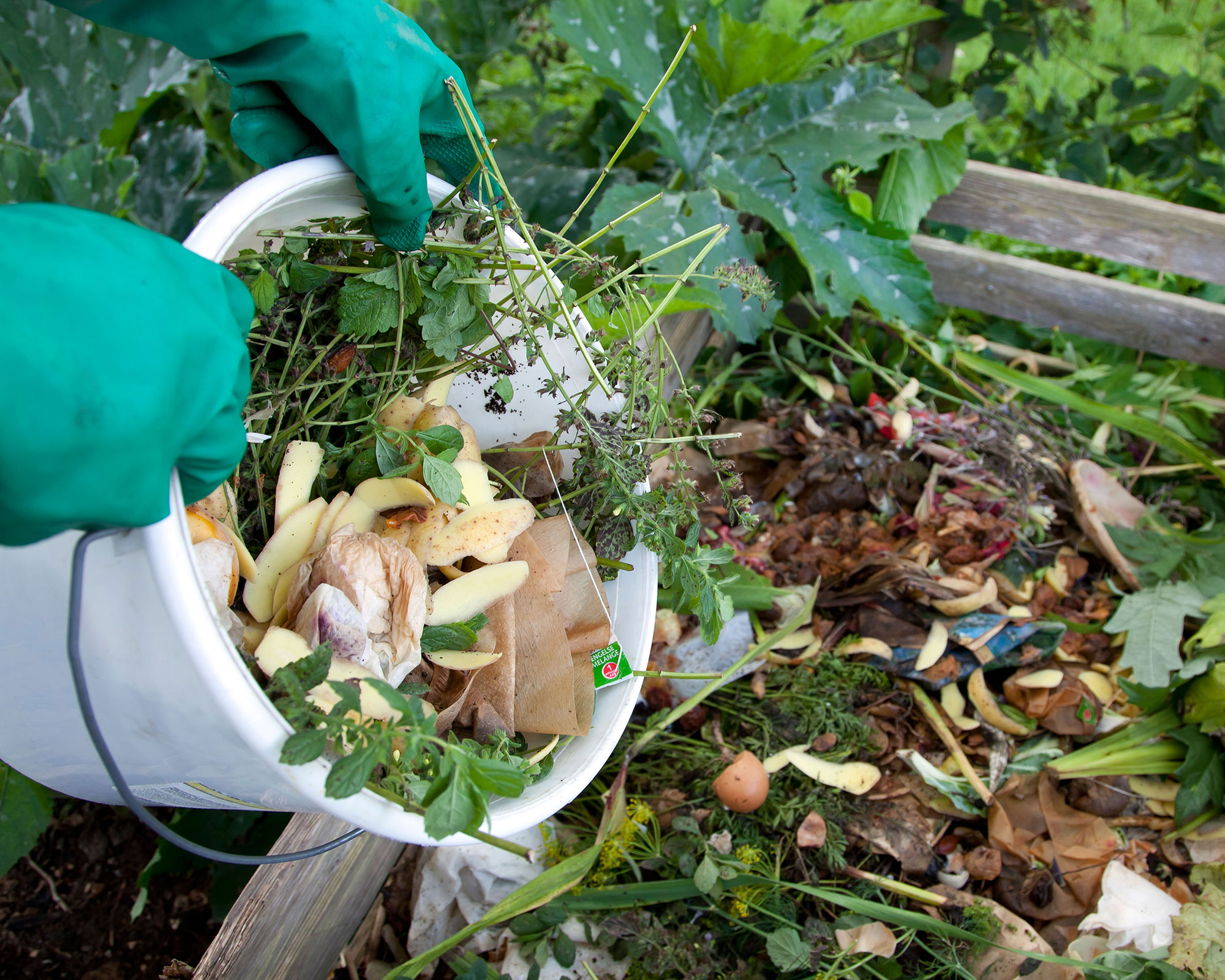
Kitchen peelings are the perfect additions to your compost heap
Keep adding prunings, green kitchen waste, grass clippings and dead plant material to your compost heap.
For the best composting results, chop up woody material so it breaks down faster and never add anything that is diseased, such as rose prunings infected with black spot. If you are overwhelmed with cardboard delivery boxes this festive season, you can cut them up and add them to the heap as well.
Turn the contents of your compost heap regularly with a fork, taking care not to spear the contents too fiercely in case you injure any wildlife hibernating within.
Rain will help composted materials to decompose faster, especially if they are building up heat as they break down in the heap. However, if dry and very cold weather is forecast, cover the heap or plastic 'Dalek' bin with some old carpet. This helps retain moisture and heat and keeps things ticking over well.
Ever wondered about the difference between compost vs mulch and what is best for your garden? Our guide has all the answers.
Top tip: Never add cooked food or pet waste to your compost as it will attract vermin.
12. Get festive with garden plants
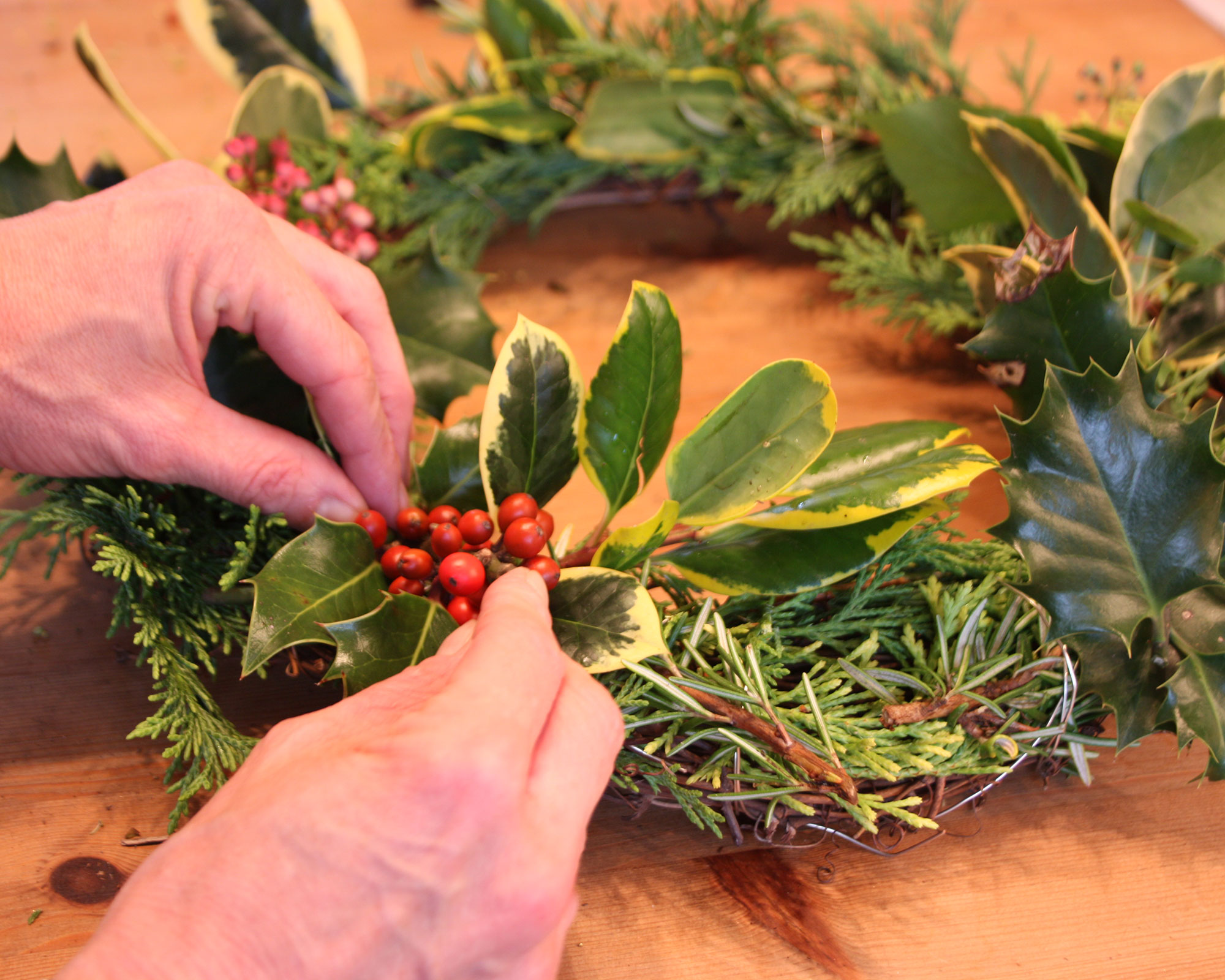
Use greenery and berries from the garden to create Christmas wreaths and swags
Prep your garden for Christmas! Harvest holly, ivy, rosemary, hips and berries and create some stunning Christmas wreath ideas for your front door and DIY Christmas decorations for your tree.
If you have a rooted Christmas tree growing in a container, it may need top dressing with fresh compost or re-potting altogether. Choose a pot one size larger than the one it is already in and use ericaceous compost.
If you plan to bring it indoors, wait until the last minute as pine trees don’t take kindly to hot, centrally heated interiors. To keep a Christmas tree alive as long as possible, place it away from radiators and open fires and return it outside as soon as you can.
Top tip: Save fallen pine needles and use them as a mulch around acid-loving plants such as blueberries, rhododendrons and azaleas.
13. Look after your lawn
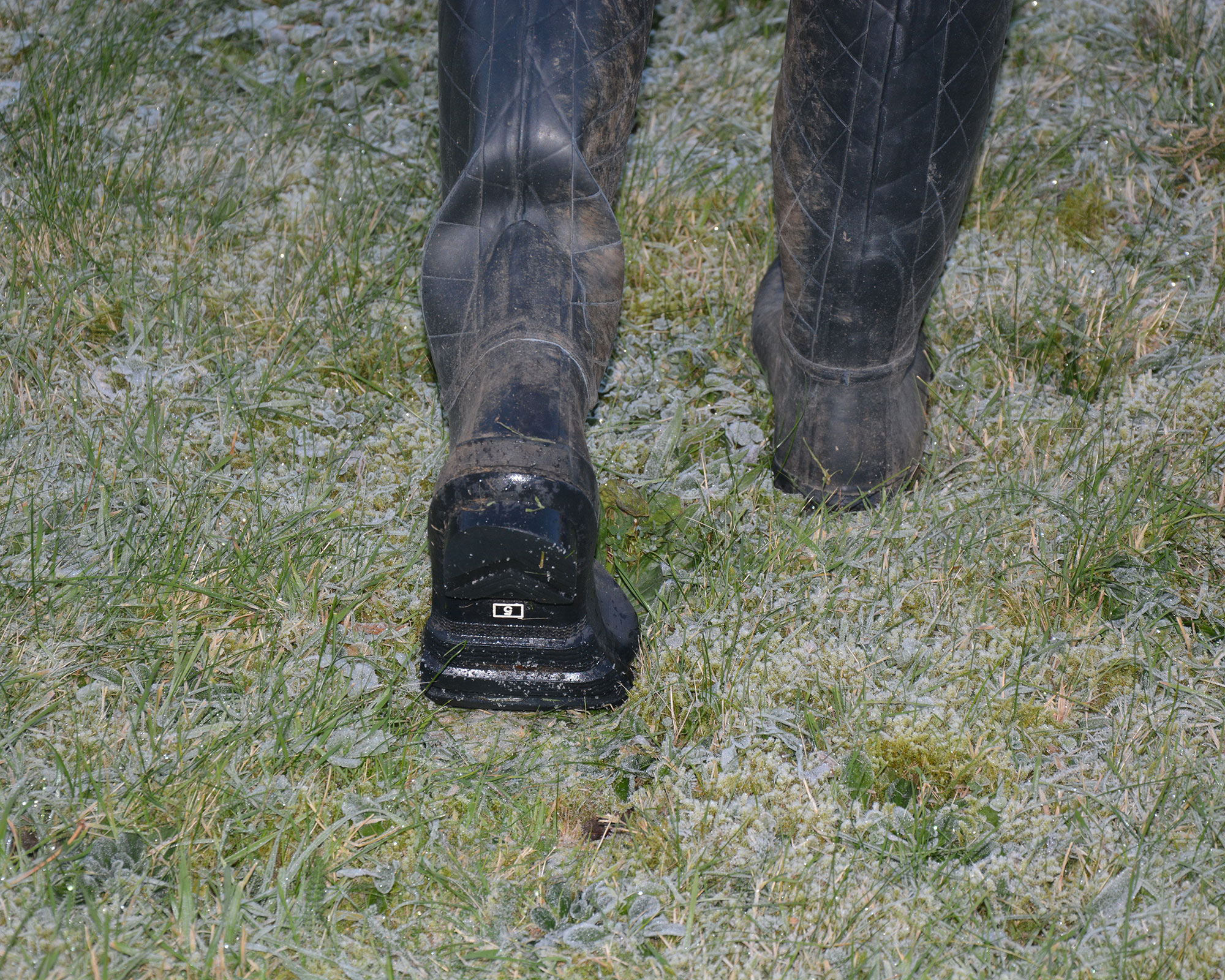
Never walk on a frosty lawn as you will damage or kill the grass
The winter months are hard for our lawns and ideally we should walk on them as little as possible. This is especially true in freezing weather as footfall can flatten and kill the grass, leaving dead patches that are swiftly colonised by weeds and moss.
There are several things you can do as part for your lawn care in winter to keep it healthy so it is ready to grow again next spring.
Grass keeps growing as long as the temperature is above 41˚F (5˚C), so you can still use your lawn mower, though keep the blades high to avoid churning up the soil.
Areas of lawn with compacted soil can become waterlogged, so learn aerate a lawn by driving the prongs of a garden fork into the affected ground to improve airflow and help the water run away.
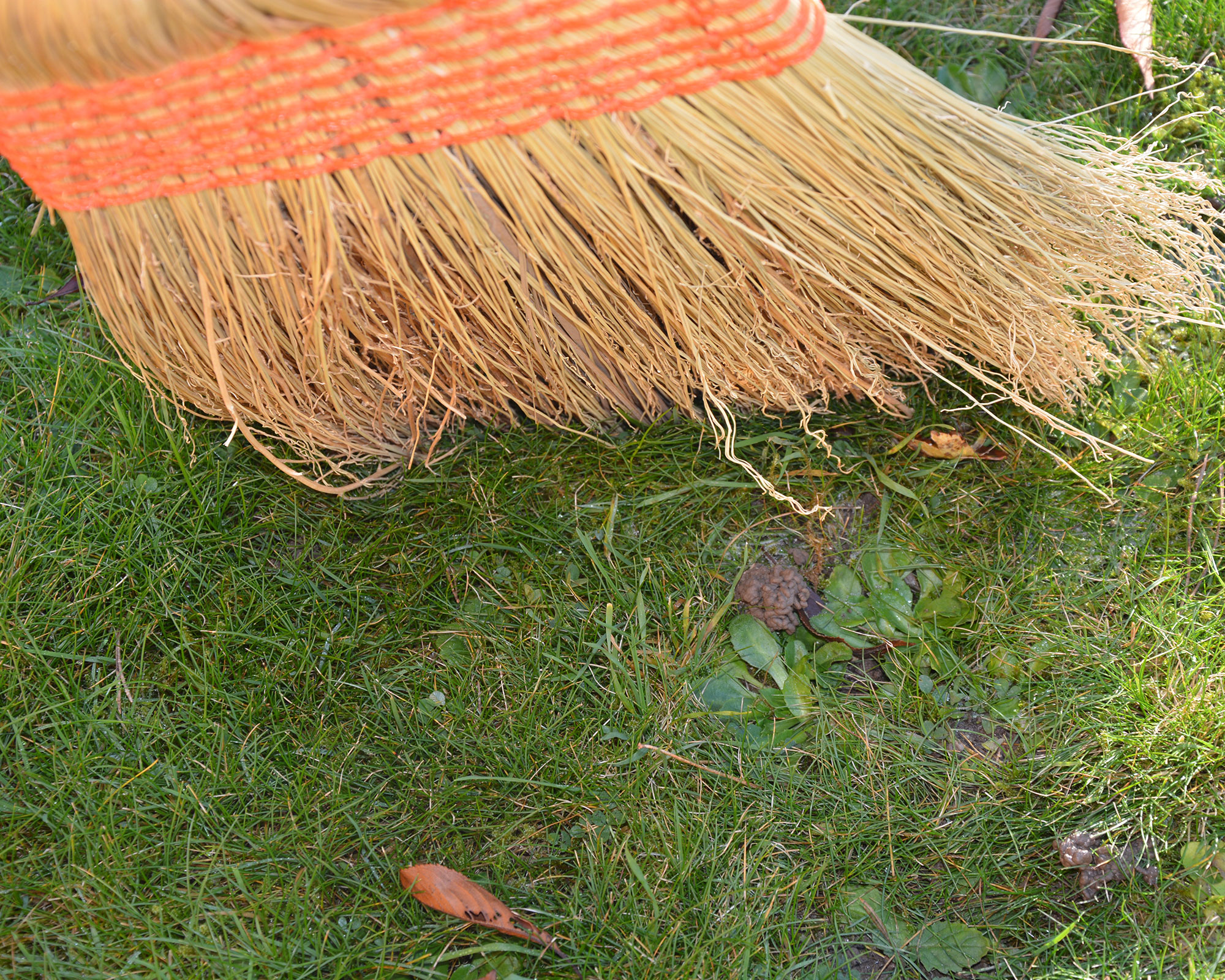
Brush worm casts off the lawn to stop weeds, moss and algae growing from them
Another autumn and winter problem is the appearance of worm castings on lawns. These are slimy coils of mud that worms push up onto the surface of the grass. If trodden on they can become a host for weeds, moss and algae, so leave them to dry and then lightly brush them away. You can also use the back of a garden rake to disperse them.
Top tip: Areas on the lawn that are shaded or growing under trees and shrubs where there is little airflow can be vulnerable to fungal diseases such as red thread and fusarium patch. Improve airflow and light levels by pruning back overhanging branches and staying off these areas in winter.
14. Keep your shed tidy
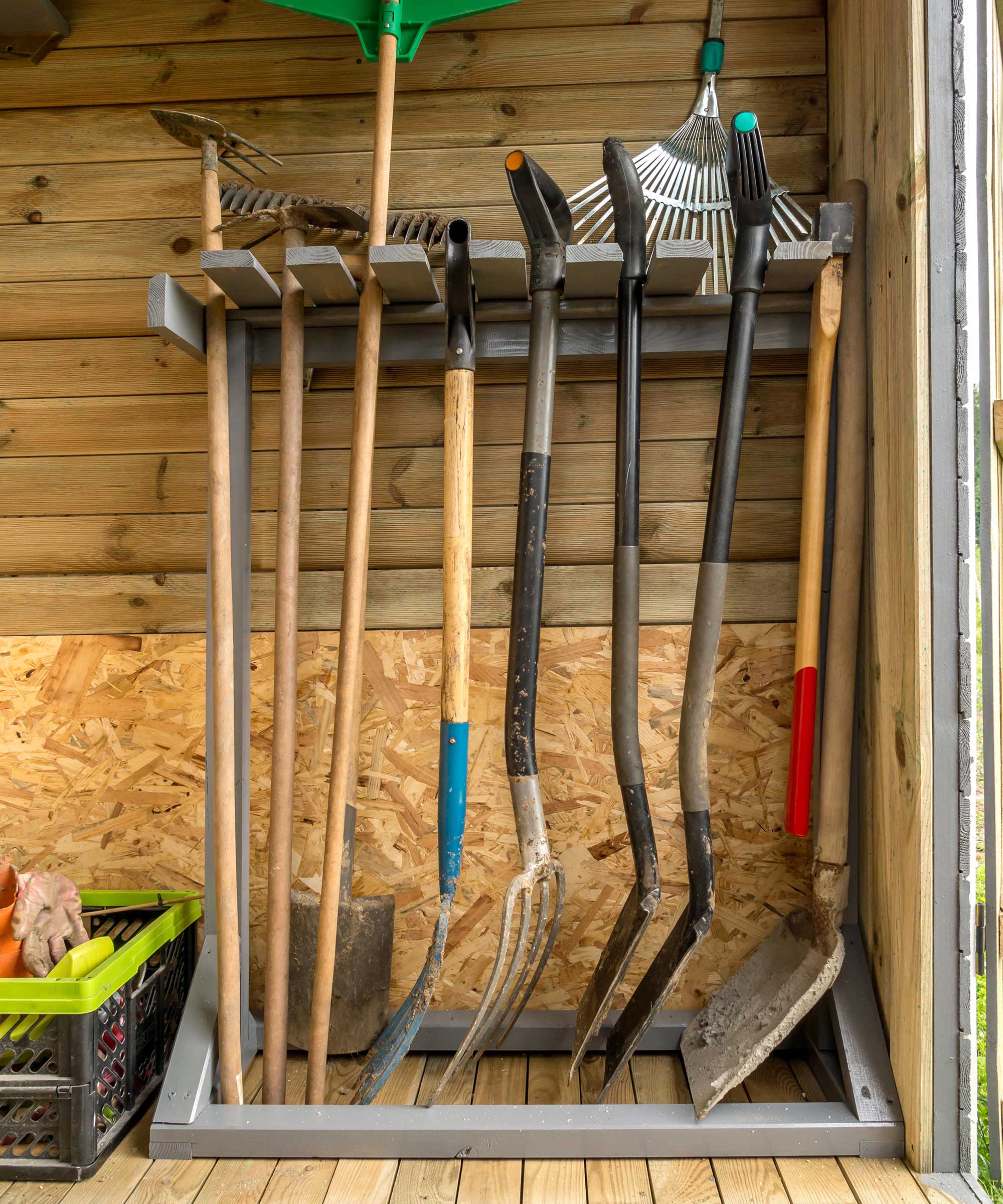
Hang up tools where possible to keep them clean and sharp and your shed tidy
Escape into the shed on dark, wet and dismal days and give it a good tidy for one of your December gardening jobs! If everything is in a jumble, with nothing in its right place, winter is the perfect time to organise some practical shed storage for tools, pots and chemicals.
Sharpen and clean your tools and hang them up so they are easily accessible and the floor is clear. Not only do practical garden tool storage ideas make life easier, they will prevent you from buying duplicates of things you thought were ‘lost’, thus saving you money!
Make sure any garden chemicals are in their correct containers – never decant them into other bottles – and keep them out of the reach of children and pets.
Also ensure that pesticides and weedkillers are stored well apart – we have heard several horror stories from readers asking for help after they have used a weedkiller instead of a pesticide on their prized plants, with traumatic results.
Top tip: Go through your pots and trays, recycling those that are broken and washing those that are reusable. It will save money and also help save the planet.

Ruth is the gardening editor of Amateur Gardening magazine and spends her working days carrying out, writing about and photographing the tasks the readers should be carrying out each week, as well as testing many of the new products that arrive on the gardening market. She is horticulturally trained, with a qualification from the Royal Horticultural Society.
